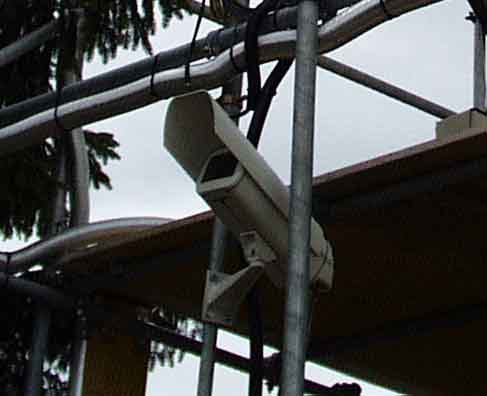High-Speed Video Recording

High-speed video camera
On June 14, 2000 during a night storm we captured the first good record of a tower initiated lightning with the high-speed video system. This special camera can record up to 1,000 frames per second with a resolution of 240x512 pixels (8-bit gray values). With a recording time of 1 second the camera detects the overall impact from the initialization process until the last part of flash. For temporal correlation with the measured currents and the ALDIS lightning location records all video images are GPS time stamped. Until 2011, the end of the operation of this camera, some more lightning flashes were recorded. But in most cases the entire mast was covered by the cloud and therefore no clear lightning channel was visible on the video data.